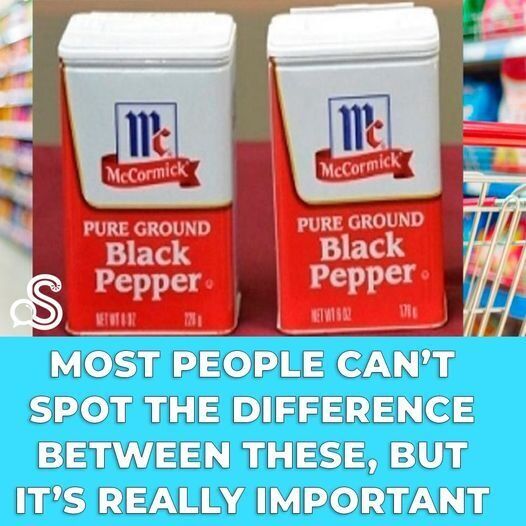When it comes to buying spices, most people don’t think twice about the packaging. But did you know that the size of a spice tin can make a big difference? It’s not just about appearances—there’s actually a significant issue involving fairness and transparency that’s currently making headlines. In fact, several popular spice companies, including McCormick & Co., are being sued over the size of their ground pepper tins.

The controversy started when Watkins Inc., a smaller spice company, accused McCormick of misleading consumers. According to Watkins, McCormick reduced the amount of pepper in their tins by 25% while keeping the same-sized container. This means that although the tins look just as large as before, you’re actually getting less pepper for your money. This might seem like a minor detail, but it has sparked a larger debate about honesty in packaging.
The issue here isn’t just about a few missing ounces of pepper—it’s about transparency and fairness in the marketplace. Watkins argues that McCormick’s packaging is designed to deceive consumers into thinking they’re getting more pepper than they actually are. Because the tins are opaque, there’s no way for consumers to see how much product is really inside. The visual trick makes it seem like the tins are filled to the brim, but the reality is quite different.
Watkins, on the other hand, sells smaller tins that contain the same amount of pepper as McCormick’s larger-looking tins. By doing this, they aim to provide consumers with a clear and honest understanding of what they’re buying. Watkins believes that McCormick’s packaging tactics are unfair because they give the impression of a better value without actually delivering it.
The practice that Watkins is criticizing is known as “slack-filling.” This occurs when a company intentionally leaves empty space in its packaging, making it look like there’s more product than there actually is. While slack-filling isn’t always illegal, it can be considered deceptive if it misleads consumers. According to consumer protection laws, companies are supposed to provide clear and accurate information about the quantity of their products. By reducing the amount of pepper in their tins without adjusting the packaging size, McCormick may be violating these regulations.
One of the most frustrating aspects of this situation is the labeling on McCormick’s tins. While the label accurately states the amount of pepper inside (e.g., “6 oz.”), the font is often small and easy to overlook. This makes it difficult for consumers to notice that they’re getting less product than before. Watkins argues that this tactic is meant to make the reduction less noticeable, giving McCormick an unfair advantage over competitors who are more transparent about their product quantities.
This isn’t just a matter of getting shortchanged on spices—it also affects the ability of consumers to compare products accurately. If two tins appear to be the same size, most shoppers will assume they contain the same amount of product. By using slack-filling, McCormick makes it harder for consumers to make informed choices, which could lead them to unknowingly pay more for less.
So, why does this matter to you? When you’re shopping for spices, it’s important to pay attention to more than just the size of the tin. Look closely at the label to see how much product you’re actually getting. Don’t let the packaging fool you—what’s inside is what counts. This is a good reminder to be vigilant about product sizes and quantities, not just for spices but for all grocery items. Many companies use similar tactics in other products, from snacks to cleaning supplies, so it’s always wise to double-check what you’re paying for.
In conclusion, the ongoing lawsuit between Watkins Inc. and McCormick & Co. shines a light on the importance of transparency in packaging. While McCormick’s tins may look the same as before, they now contain less pepper, which Watkins argues is misleading to consumers. This practice, known as slack-filling, raises questions about fairness and honesty in the marketplace. As consumers, it’s crucial to be aware of these tactics and to take a closer look at product labels. By doing so, you can ensure that you’re getting the best value for your money and making informed decisions at the grocery store. So, the next time you’re picking up a tin of spices, remember: size isn’t everything—what’s inside truly matters.





